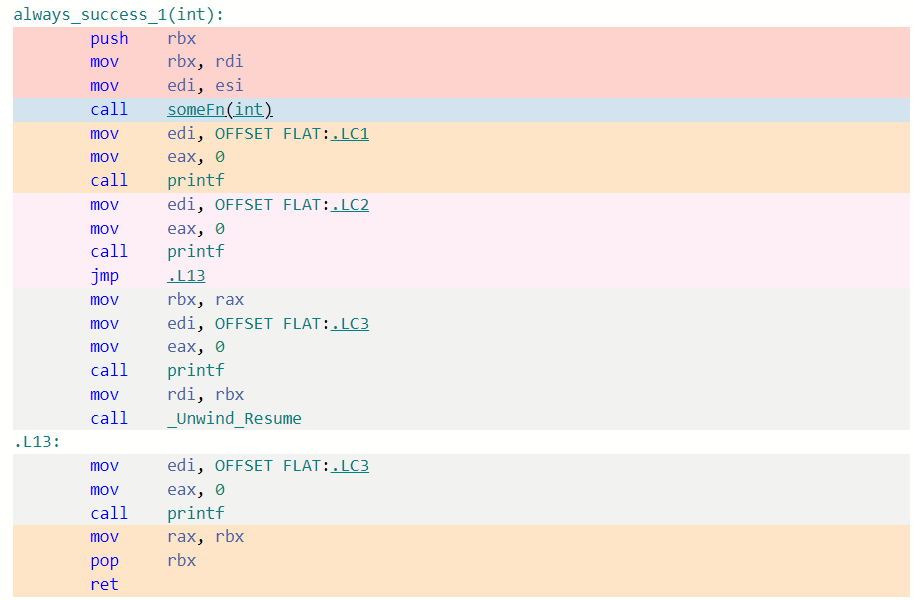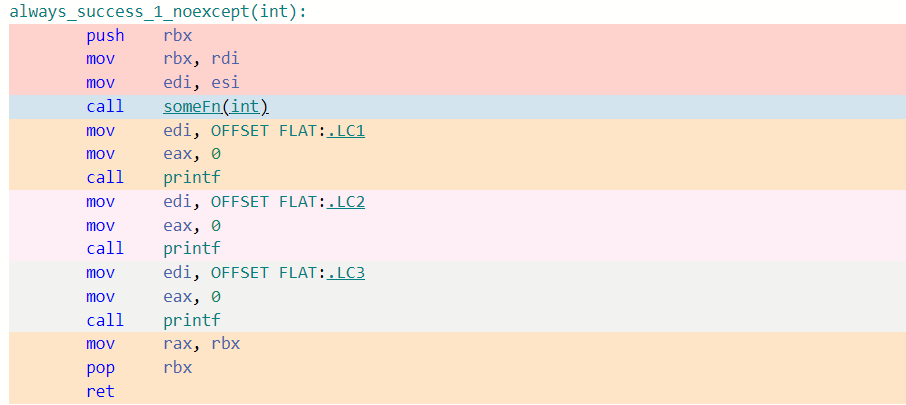返回值优化RVO
在cppreference中,是这么介绍RVO的
In a return statement, when the operand is the name of a non-volatile object with automatic storage duration, which isn't a function parameter or a catch clause parameter, and which is of the same class type (ignoring cv-qualification) as the function return type. This variant of copy elision is known as NRVO, "named return value optimization."
即在返回函数内部临时变量(非函数参数,非catch参数)时,如果该参数的的类型和函数返回值类型相同,编译器就被允许去直接构造返回值(即使copy/move构造函数具有副作用)。
std::optional
std::optional是在C++17引入的,常用于有可能构造失败的函数,作为函数的返回值。
在cppreference中,std::optional的例子如下:
点击查看代码
#include <iostream>
#include <optional>
#include <string>
// optional can be used as the return type of a factory that may fail
std::optional<std::string> create(bool b)
{
if (b)
return "Godzilla";
return {};
}
// std::nullopt can be used to create any (empty) std::optional
auto create2(bool b)
{
return b ? std::optional<std::string>{"Godzilla"} : std::nullopt;
}
int main()
{
std::cout << "create(false) returned "
<< create(false).value_or("empty") << '\n';
// optional-returning factory functions are usable as conditions of while and if
if (auto str = create2(true))
std::cout << "create2(true) returned " << *str << '\n';
}
一个尴尬的情况是这个例子并没有介绍在函数内部构造一个左值变量然后返回的情况,于是乎网上就出现了很多种return optional的写法。本文就想探讨下究竟哪一种写法才是最高效的。
实验
参数
编译器:x86-64 gcc 13.2
编译参数 -O1 -std=c++17
基于compiler explorer
准备工作
假设我们原始的函数具有以下形式
A always_success_0(int n) {
A temp(someFn(n));
return temp;
}
如果单纯作为可能fail的函数的一层包装,一种很自然的想法是只把函数的返回值改为std::optional,而函数体不变,即
optional<A> introduce_option_0(int n) {
A temp(someFn(n));
return temp;
}
很明显这会破坏NRVO的条件,但究竟相差多少呢?有没有挽回办法?
我找了网上目前常见的写法,我们可能有以下变体
optional<A> introduce_option_0(int n) {
A temp(someFn(n));
return temp;
}
optional<A> introduce_option_1(int n) {
A temp(someFn(n));
return std::move(temp);
}
optional<A> introduce_option_2(int n) {
A temp(someFn(n));
return {temp};
}
optional<A> introduce_option_3(int n) {
A temp(someFn(n));
return {std::move(temp)};
}
为了探究NRVO的条件和优化程度,对原本的函数也使用这4种变体
A always_success_0(int n) {
A temp(someFn(n));
return temp;
}
A always_success_1(int n) {
A temp(someFn(n));
return std::move(temp);
}
A always_success_2(int n) {
A temp(someFn(n));
return {temp};
}
A always_success_3(int n) {
A temp(someFn(n));
return {std::move(temp)};
}
同时让我们定义struct A
struct A{
int ctx;
A(int x) noexcept {
ctx=x+1;
printf("default construct");
}
A(const A&) noexcept {
printf("copy construct");
}
A(A&& ano) noexcept {
printf("move construct");
}
~A() noexcept {
printf("destruct");
}
};
tips:
使用noexcept使编译器允许进一步优化,否则汇编会增加一段异常处理,如下图所示


同时为了方便定位,防止编译器进一步优化,我们将someFn写成一个具有副作用的函数
int someFn(int n) {
int x;
scanf("%d",&x);
return x+n;
}
现在我们有了进行编译的所有代码:
点击查看代码
#include <cstdio>
#include <optional>
using std::optional;
int someFn(int n) {
int x;
scanf("%d",&x);
return x+n;
}
struct A{
int ctx;
A(int x) noexcept {
ctx=x+1;
printf("default construct");
}
A(const A&) noexcept {
printf("copy construct");
}